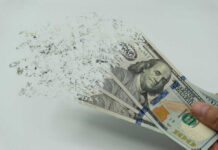
In a world where the mainstream media often fails to highlight the profound threats nature poses, Indonesia’s Mount Lewotobi Laki Laki has erupted, sending a massive ash cloud soaring 11 miles into the atmosphere.
See the video below!
As the mainstream continues to ignore these disasters, one can’t help but wonder if there’s more to their silence.
The eruption occurred on July 7, 2025, and has grabbed global attention as volcanic materials were forced 18 kilometers into the sky.
This cataclysmic event has led to ash deposition on nearby villages, affecting flights, and instigating Australian officials to issue a red aviation warning due to imminent threats to air travel, spreading unease among locals and travelers alike.
Residents in close proximity have been warned by Indonesia’s Geology Agency to keep their distance, as dangers of lava flows remain high.
Drones observed lava filling the crater, a telltale signal of deep magma movement and volcanic earthquakes.
Authorities enforced a 4.3-mile exclusion zone to prevent casualties and advised individuals to wear masks due to ash inhalation risks.
Australia’s VAAC reported ash plumes exceeding 12 miles high, prompting increased safety assessments.
“Explosive activity continues,” read the VAAC warning.
The ominous incident is a reminder of Mount Lewotobi’s notorious past, including eruptions in June and a tragic one in November 2024, which resulted in nine deaths and dozens of injuries.
Drones detected movements suggesting seismic shifts and indicated possible increases in eruptions over recent years.
“Certainly carries a higher potential for danger, including its impact on aviation,” expressed Muhammad Wafid, chief of Indonesia’s Geology Agency, as authorities debated enlarging danger zones around this volcanic titan.
As a habitual measure amidst increased volcanic activity, local authorities emphasized emergency preparedness; however, flight disruptions persist, especially on routes connecting Bali, Australia, Singapore, and South Korea.
The eruption underlines the volatility of Mount Lewotobi, with lava rivers traveling down its slopes, painting a grim picture of nature’s unpredictable power.
For those skeptical of extreme weather events, this serves as a wake-up call, reiterating how critical it is to heed nature’s warnings.
Social media platforms buzzed with dramatic footage of the event, spreading the magnitude of this unfolding crisis to the world stage.
The urgency in reassessing safety protocols is palpable as this fiery giant continues to remind us of Mother Nature’s wrath.
Indonesia, part of the “Ring of Fire,” is no stranger to seismic activities, having a record of hosting 120 active volcanoes.
As evacuations continue and crisis management escalates, one must ponder whether more robust preparedness initiatives should be advocated for globally.



















